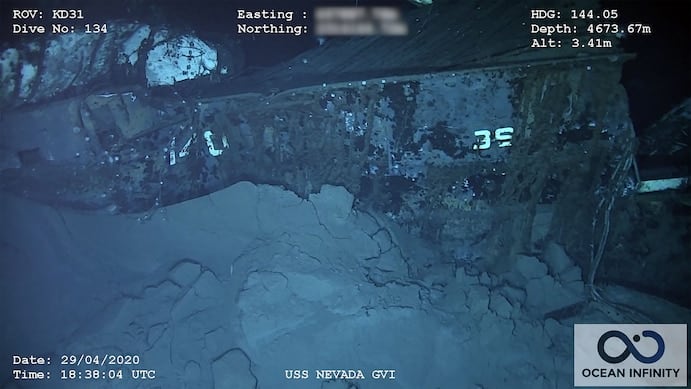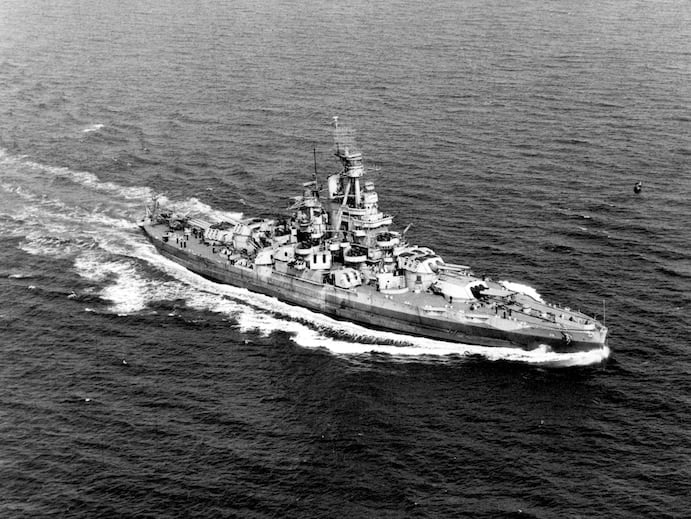USS Nevada
Categories: Finds and rescue research abroad , War at sea
 About 120 kilometres southwest of Pearl Harbor, underwater archaeologists have discovered the wreck of the legendary USS Nevada. It served in the US Navy for 35 years, eventually sinking after nuclear testing.
About 120 kilometres southwest of Pearl Harbor, underwater archaeologists have discovered the wreck of the legendary USS Nevada. It served in the US Navy for 35 years, eventually sinking after nuclear testing.
The numbers 36 and 140 are still visible on the USS Nevada, which were intended to make it easier to report the damaged section after a possible attack. In addition, scientists have found the ship's actual markings, BB-36. The discovery was reported by Ocean Infinity and Search Inc., companies that are involved in underwater archaeology.
The USS Nevada was launched on July 11, 1914, and was taken over by the U.S. Navy on March 11, 1916. Twelve boilers provided propulsion, and the ship's top speed was 38 kilometers per hour. An all-or-nothing armour system was used for the first time in the construction of the USS Nevada. This meant that major and vital parts were protected by strong armour, while less important parts were only weakly protected.
It was the only USS Nevada to survive the Japanese attack on Pearl Harbor. But she had to run aground because she was hit by one torpedo and several bombs. After recovery and necessary repairs, she successfully participated in escorting Atlantic convoys and amphibious operations in Normandy, southern France, Iwo Jima and Okinawa. She ended her combat tour in 1948 as a target ship in the nuclear tests at Bikini Atoll. It took over four days to sink the radioactive vessel. The U.S. military had to use an aerial torpedo.
Scientists found the wreck in April. "Many of us who are involved in archaeology know very well that the greatest museum is at the bottom of the sea. When we find a rare shipwreck, it always means a kind of reminder of our past. It's a link between the present and what has already happened," thinks James Delgado, leader of the archaeological team that discovered the wreck of the USS Nevada.
The joint project between the two companies mentioned above began with a chance call to Ocean Infinity, which had already managed to find the wrecks of two famous ships and had a survey ship stationed near Honolulu. It had to remain at sea because of a coronavirus pandemic.
Both companies immediately agreed and began exploring. They identified an area to focus on. They agreed to survey about 100 square miles of the seabed. They eventually discovered the wreck at a depth of about 4,700 metres. The photos and video footage show the anti-aircraft gun, the aforementioned inscriptions and the hatch of the machine gun chamber.



Sources: www.washingtonpost.com, Leo Marriott, Forty Simon: Normandy Battlefield - D-Day and the Battle of the Bulwark, www.nationalgeographic.com
The article is included in categories: